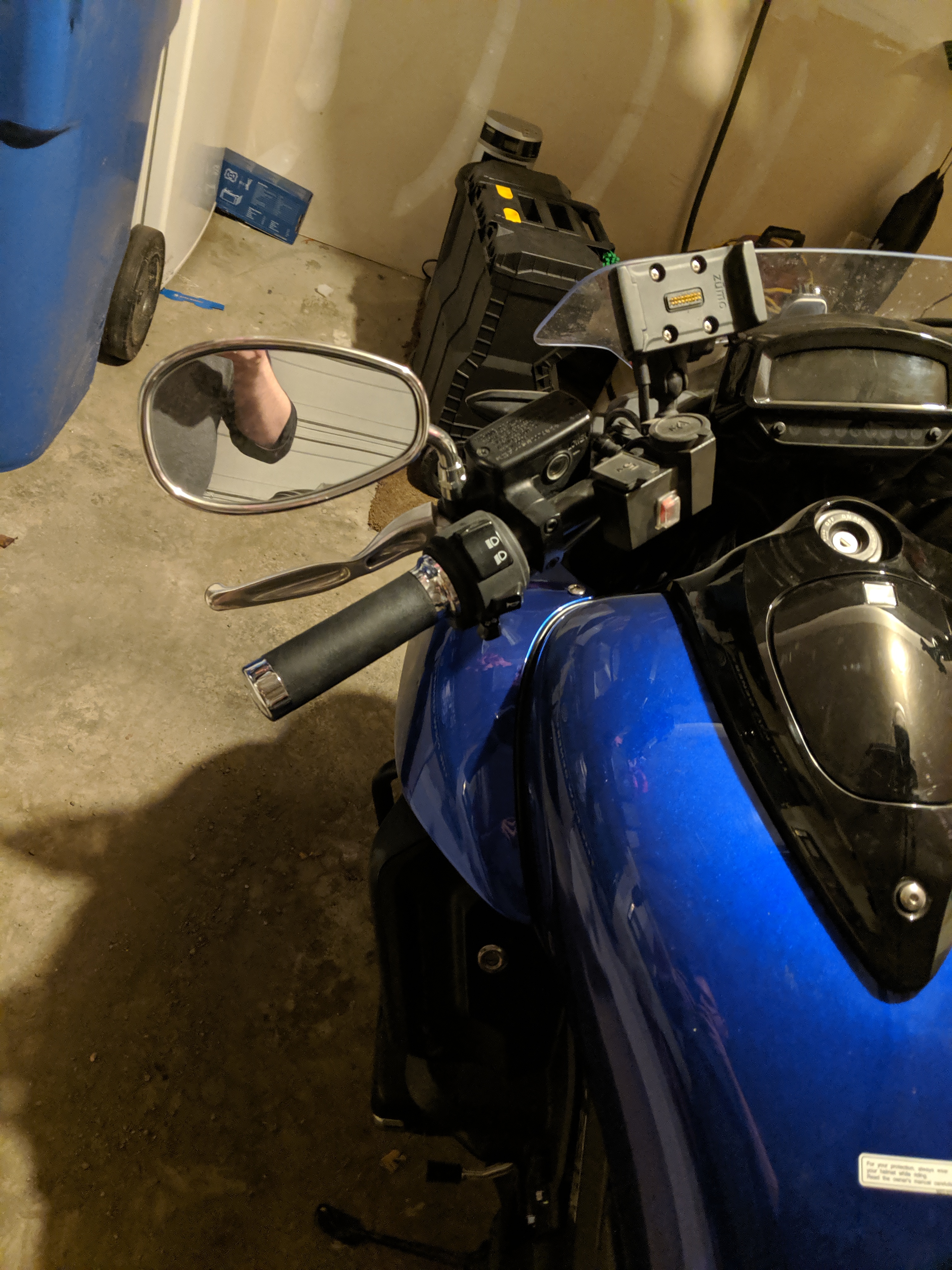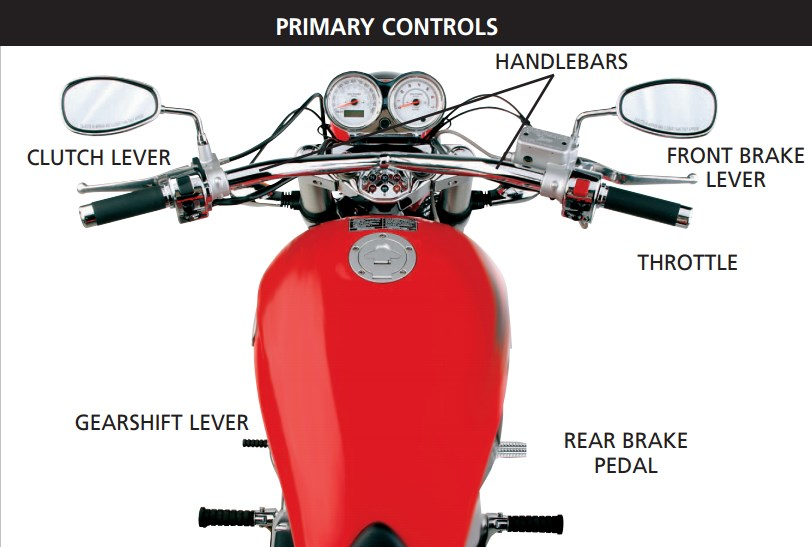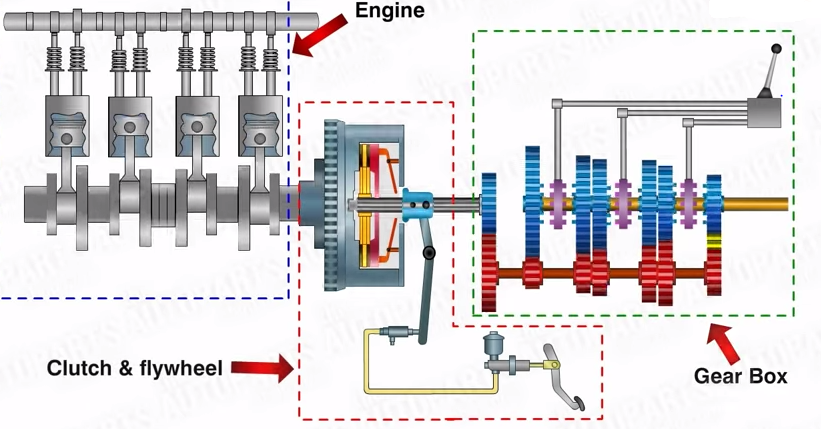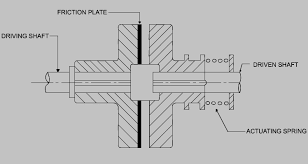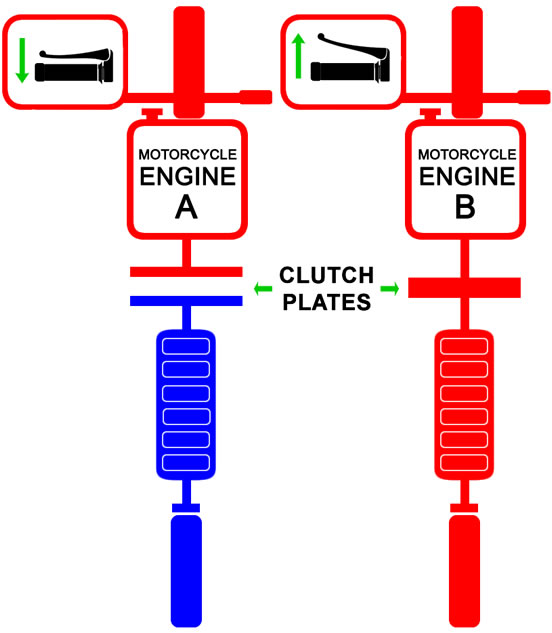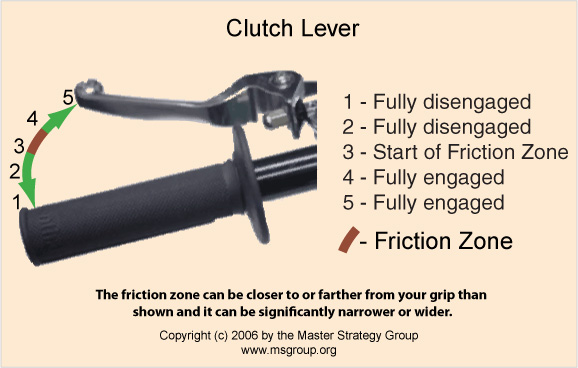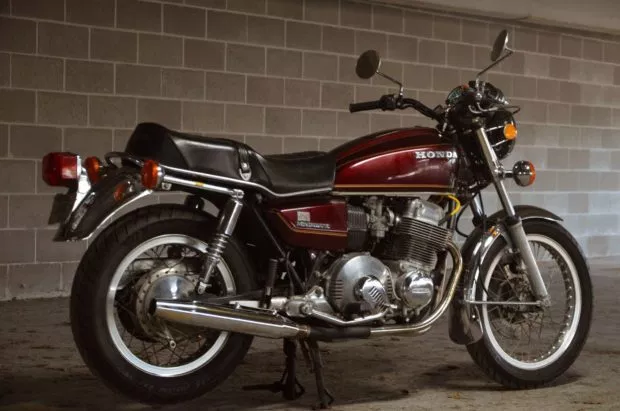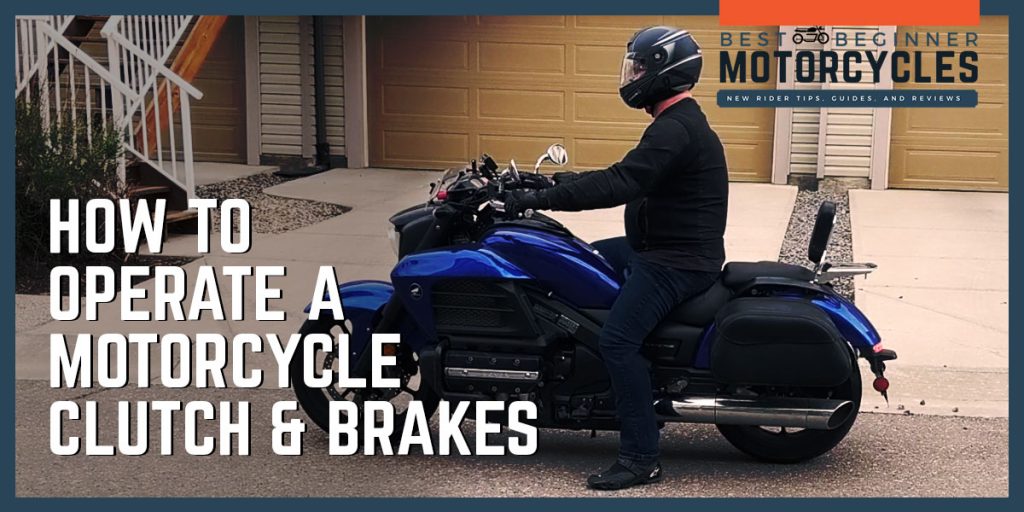Since the first motorcycle design, many changes, evolutions, and innovations have taken form over the years of its development – but one thing that has stayed the same for motorcycles from the beginning to now is a need to control the delivery of power to the driving wheel (clutch) and a way to stop (brakes).
It’s true, there are some automatic motorcycles available (and more appear to be coming), but for 99% of us, learning to control a clutch is an important skill to master.
These core controls have become standardized in where they are located on the motorcycle, allowing for the industry to refine the controls to be very sensitive to the inputs of the operator.
Because of how sensitive these modern motorcycle controls can be, you as an operator need to make sure that you have acquired the necessary dexterity and skill to keep your motorcycle under control at all times.
In this article, I will discuss what the clutch and brakes do, where the controls are located, how to use them, and give you some exercises to practice that will allow for building up your confidence and skill.
Clutch
Almost all motorcycles come outfitted with a manual transmission, which includes a clutch. When teaching at my courses, I find that a majority of my students either don’t know or have trouble with the concept of what a clutch is, what it does, and how it works.
I can only imagine this is due to most cars, trucks, and other non-two-wheeled vehicles being equipped with an automatic transmission that doesn’t require a clutch and shifting mechanism, so many people don’t have a reference point.
Even with a working knowledge of all that is clutch, everyone has growing pains when learning how to use it. In the course I teach at SAIT, we spend hours making sure people are comfortable using the clutch and continue to build on that skill continuously throughout the rest of the course.
Be sure to take time developing your skills using the clutch and that you are comfortable with it, especially if you are following our learn to ride a motorcycle guide, as many of the articles will expand on the concepts from this article.
What is a Clutch?
A clutch is a control/mechanism of a manual transmission (both cars & motorcycle) which variably delivers power that the engine is producing to the gearbox/transmission, which in turn is connected to the driving wheel.
How Does a Clutch work?
There are two types of clutches: wet clutch and dry clutch.
Wet Clutch
- The clutch is bathed in lubricants/fluids to help cool and mitigate wear and tear. This allows for a clutch to take a lot of abuse, especially from new riders.
- Wet clutches are notably quieter than dry clutches.
- Most street bikes have a wet clutch.
Dry Clutch
- There is no lubrication/ fluids used in the clutch system. The clutch has a shorter life span but is considered to have higher performance, a.k.a. “less drag on a motor”.
- There are many designs of clutches but all functionally operate on the same basic Typically only MotoGP bikes and a select few manufacturers really ever used dry clutches, Ducati, BMW, and Moto Guzzi to name a few.
The clutch system works on the principle of friction. The diagram below shows the basic mechanical premise of a clutch system.
- A plate that is connected to the driving shaft/motor
- A separation or gab
- Another plate that connects to the driven shaft/transmission and wheel
This clutch mechanism is controlled on a motorcycle by a hand lever.
- When the lever is pulled in all the way the plates are separated (“0% power transferred”), but as you release the lever the plates get closer together allowing a variable connection between the Motor and the wheel, based on the amount of pressure and friction being applied on the clutch.
The more friction or pressure, the more power is transferred to the wheel. Which is controlled by how much you release the lever.
- When the lever has been fully released the clutch plates should act as if they have been fused together delivering all of the motor’s power directly to the transmission and wheel (“100% of the power delivered”).
Before We Continue…
If you are unfamiliar with how to safely mount your motorcycle, start your motorcycle, or don’t know what the ready and riding position is, please review these other articles for greater detail.
- Mounting/Dismounting a Motorcycle
- Starting a Motorcycle & Assuming Ready/Riding Positions
Be sure to thoroughly read the braking portion of this article to make sure you have an understanding of how to stop your motorcycle when practicing. In the event you don’t have full control, you will have the know-how to regain control.
Basics of Using the Clutch & Finding the Friction Zone
To properly utilize any kind of clutch system, you will need to become intimately familiar with something called the friction zone.
The friction zone is the section of the clutch lever’s travel, that actually initializes and gradually increases the contact and transference of power of the motor to the wheel.
In the diagram above you can see numbers 1-3 and 4-5 are either fully engaged or disengaged. These sections are known as dead zone and that little teeny tiny red space between 3-4 is where all the magic happens and is the sought-after friction zone.
Utilizing the clutches friction zone can be difficult because even moving the lever only 0.5mm can make a difference in the clutches transfer of power.
When you first start using a clutch there are a few things you will want to focus on that will both help develop good clutch control sooner, but also develop good riding habits and allow you to hop onto any motorcycle and get the “feel” of the bike much quicker.
Use All Four Fingers
As new riders, you will want to make sure that you are using all 4 fingers to pull in and release the clutch.
- You don’t want to block the lever’s travel with some of your fingers on the grip as this may also limit your control.
- When using 4 fingers you typically have better control of the clutch as you have higher dexterity using your whole hand.
- If for some reason you end up dropping your bike but you tried to slow down first by pulling in the clutch with only a few fingers – then the remaining fingers could get pinched between the lever and the grip, worst-case scenario, unpleasantly removing them from your person.
Assume the Grip Position for Better Control
When you are not actually using a hand lever control make sure to put your hand back onto the grip, as you have a lot more control of the motorcycle when holding onto the grips.
Pay Attention To the Road, Not Your Controls
Avoid as best you can, looking at your controls. I promise you that they aren’t going anywhere and seeing what you are doing with them doesn’t help.
Most of riding a motorcycle is about the feel of the bike, as every single bike has different characteristic, and these characteristics generally can’t be determined just by looking at a bike. Plus you want to make sure you are paying attention to the road as much as possible.
Relax Your Body
Last recommendation is to try your best to keep your body relaxed. People that are tense on a motorcycle tend to have issues riding smoothly.
Clutch Confusion
Using and understanding how the clutch works can be confusing to some. Most of the time it just takes a different perspective or and different way of explaining it to someone. Here is another perspective that may help if you are having issues understanding by reading the Motorcycle Clutch Control & the Friction Zone.
Motorcycles Without a Clutch
As I mentioned early on in the article, most motorcycles are manual transmissions with a clutch system in place.
CVT Transmission
However, there have been a few motorcycles like the Hondamatic and most scooters that use CVT transmission, or “continuously variable transmission”, that doesn’t require any shifting or clutching on part of the rider.
DCT Transmission
Some newer models of motorcycles have what’s called a DCT transmission, or “dual-clutch transmission”, where the shifting is done by the computer and can be overridden by switches typically found on the handgrips so you can still have the feel of manual transmission without the clutch.
Getting Used to the Sensitivity of the Friction Point
It’s time to mount your trusty steed, rile it up, and be ready to move about a foot or two :D. Before you can run you need to know how to walk, and in this case, you need to know how to crawl before you can walk. For this exercise, I will ask you to do the following:
- Find a space that is unobstructed and flat.
- For this exercise, because we are only supposed to be moving about a foot or two doesn’t have to be a large space.
- Get on your motorcycle and start it up.
- Assume the ready position.
- Just a reminder: ready position is where you have the motorcycle in gear with the clutch disengaged, right foot on its peg with the rear brake applied, your left foot on the ground, and head looking up (not looking at your controls).
- Put your left foot forward, as far and comfortably as you can. This allows the motorcycle to move a little while you have your foot down.
- Slowly release your clutch to the point you start to get pushed forward.
- Continue moving forward only about a foot or until your leg is just past the original ready position. Pull in the clutch to stop. Feel free to use the rear brake to stop if you over released the clutch and moved too far to fast.
- DO NOT RELEASE THE CLUTCH ALL THE WAY YET.
Note: the objective of this exercise is to find where the friction zone is and allow you to get some practice staying in the friction zone and still move. If you have to use your brakes to stop you are doing it wrong. You should also not have to use the throttle at all for this exercise.
Motorcycle Brakes
When first using motorcycle brakes vs a regular bicycle you will need to take your time and build up your skills just like you are for the clutch lever control.
Street motorcycles are so much heavier than a pedal bicycle that most people are used to using, so the braking power and sensitivity of motorcycles often surprises people.
Motorcycles are also different from cars when it comes to braking. The vast majority of motorcycles have separate front and rear brakes as both brakes shouldn’t always be used.
Front Brakes
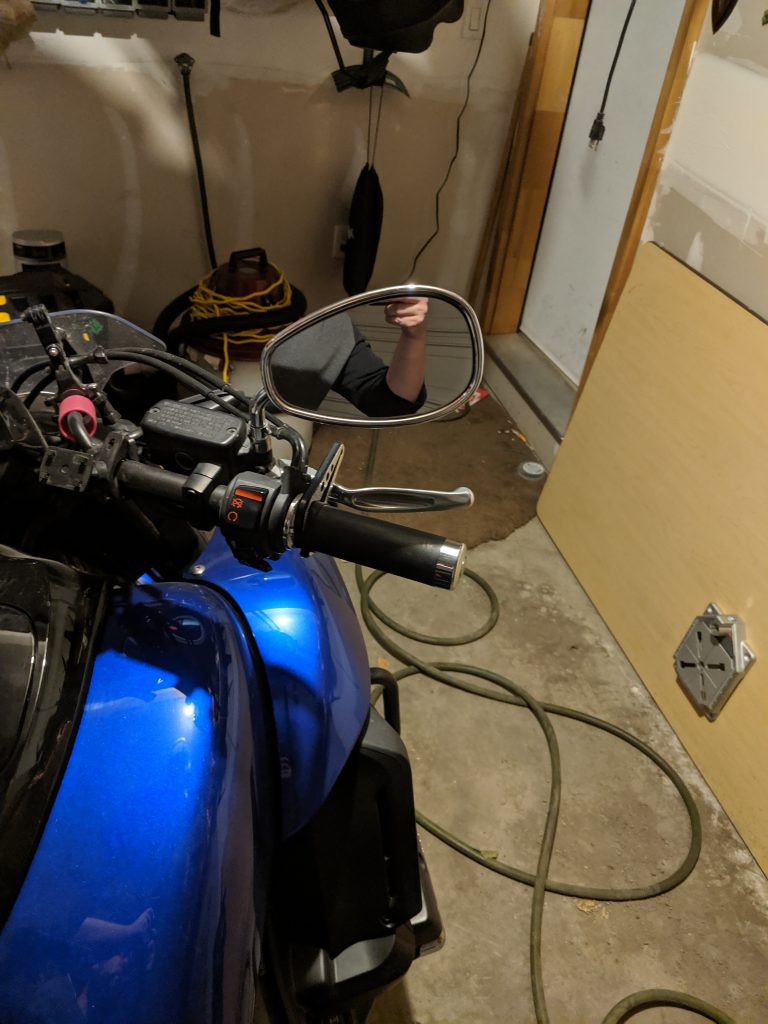
I have heard from some of my students that they have been told to NEVER use the front brake because it is dangerous. The front brake is only dangerous to riders that don’t know how to use it.
Under regular use on an average motorcycle, 70% of your stopping power is from your front brake, and even more on high-performance style bikes. This is due to weight transferring to the front tire while braking.
The reason why some riders may consider the front brake dangerous is that no one taught them how to properly use it.
We will have another article in the future that will go in-depth on braking and emergency maneuvers. In the meantime, follow these guidelines when using the front brake.
- Like the clutch, make sure you use all 4 fingers when applying the brake and be sure to put them back on the hand grip when you are finished using the brake.
- When applying the front brake, there should be very little dead zone movement in the lever, so you want to be careful right away. You always – no matter the situation – apply brakes, don’t grab them.
- A technique I teach students when they are first learning to control the front brake is to apply pressure to the lever one finger at a time. This avoids using too much pressure right off the bat and makes the brake application more predictable.
- There are techniques that allow you to use your front brakes while in a turn however as a new rider it is in your best interest to avoid using the front brake when turning.
Rear Brakes
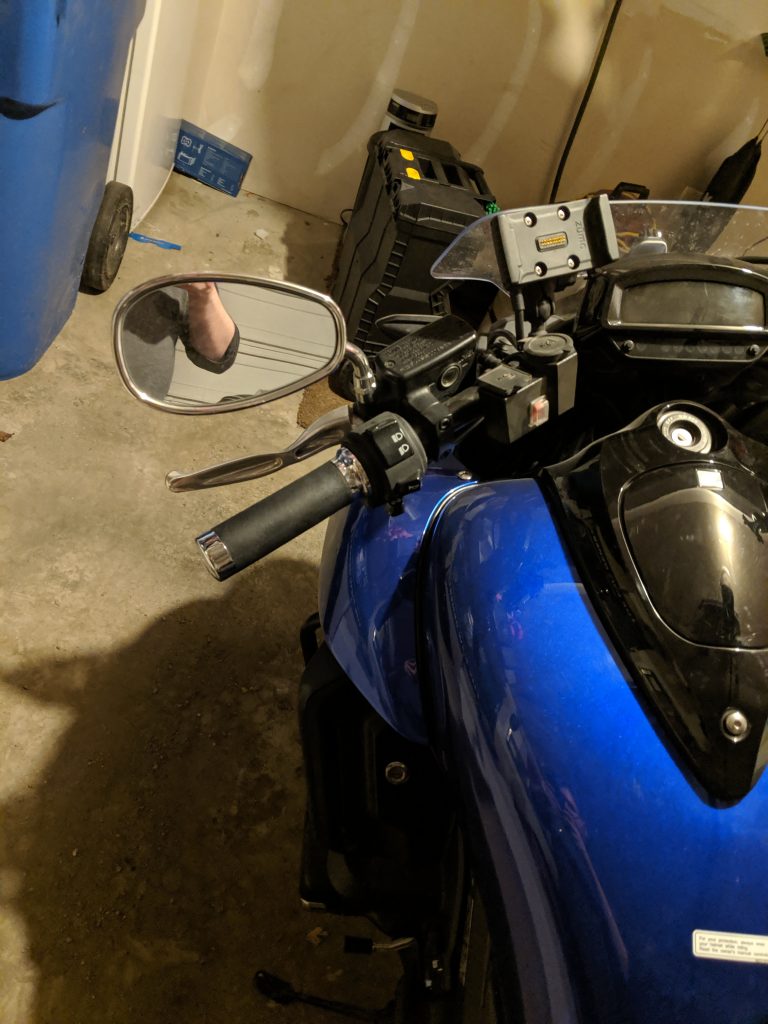
The rear brake only generates about 30% stopping power but can be used in virtually any situation where slowing and stopping is concerned.
The brake is very easy to use. all you have to do us apply gradual pressure to the brake control using the ball of your foot. The rest is just practice.
The rear brake is useful for more than just stopping: it can be used at low-speeds to stabilize the bike and make it easier to maneuver- ideal for parking lots, low-speed residential areas, etc.
Clutch & Braking Exercise
This exercise is a continuation of the exercise depicted at the end of the clutch section.
- You will need a paved flat roadway or parking lot.
- Pick up where the earlier exercise left off: ready position with the bike in gear.
- Instead of only partially releasing the clutch you will be slowly releasing the clutch all the way, so that the bike may start moving and pay attention to where in the clutch travel path the bike starts to inch forward.
- Make sure to put your left leg back onto the peg once you are moving.
- Be sure that both hands are back on the hand grips
- Go about 15-20 ft
- Pull in the clutch
- Apply both brakes evenly and gradually until you come to stop. Don’t forget to put the leg back down when you stop.
- Practice only putting your left leg down as you should be using your right foot for the rear brake.
Remember to Keep Your Eyes Up
The biggest issue I see my students do during exercises like this that they are always looking at their controls. Make sure to keep your eyes up. You want to be sure to develop the muscle memory to ride, not to look at controls.
Using the clutch and specifically, the front brake is typically the most difficult controls to master. Be sure to take your time practicing these skills and strive to do better every time you ride.

